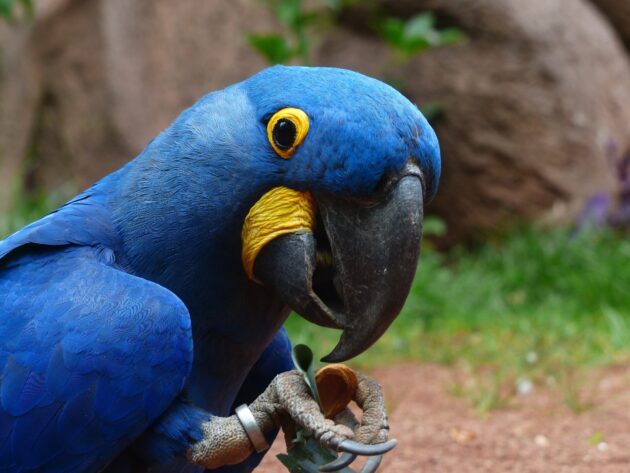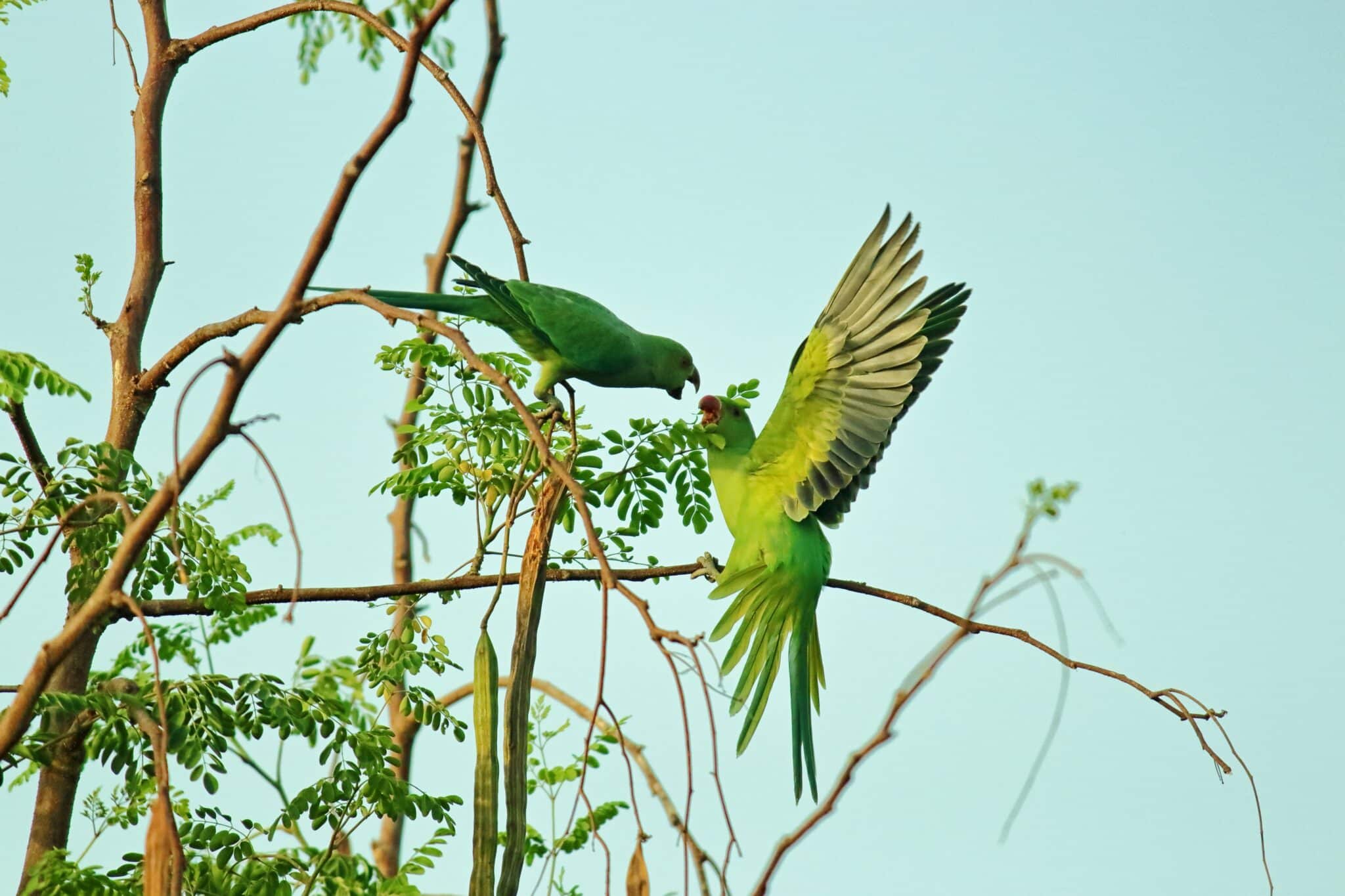
Cats meow. Dogs Woof. Horses neigh. Sheep bah. Cows moo. Pigs oink. Many animals make unique sounds, but only parrots make human sounds.
Parrots mimic human words. Owners can teach parrots how to speak by repeating words and phrases. Watch what you say because a parrot might parrot you! Unlike humans, parrots have muscles in their throats rather than vocal cords. A group of parrots is called a pandemonium, which means wild and noisy. I think the term pandemonium really fits these vocal creatures.

Parrots have many interesting physical characteristics. Their curved beaks are really strong, and they can break the hardest nut shells. In fact, their beaks are so strong that they can crack metal cages. Parrots are zygodactyls, meaning that they have four toes on each foot. Two toes point forward, and the other two point backward. Parrots have the best grip—better than other birds’! They eat their food while holding it with their feet like humans hold food in their fingers. Parrots like using one foot more than the other, so parrots are right-footed or left-footed.

No matter which way parrots grip their food, they love to eat a wide variety of foods. Parrots are omnivores, meaning that they eat both meat and vegetables. If you are a vegetarian, don’t worry; the parrot will be happy with a vegetarian diet. Some of the parrot’s favorite foods are fruit, nuts, seeds, papaya, and bananas. Parrots like eating colorful foods like flowers, pumpkins, mango, and asparagus. Perhaps parrots like eating colorful foods because they are colorful themselves.
Parrots have a gifted intelligence. They have the same capacity for logic as a 4-year-old child. A part of the parrot’s brain is similar to a primate’s brain. Parrots can add, subtract, and even understand the meaning of zero.
These bright birds are found in warm climates all around the world, particularly in rainforests. Parrots were moved to different climates because they were sold as pets. When owners set the tame birds free, parrots adapted to new climates. They reproduced, adjusted their diets, and made nests there. Parrots are resilient. I like the fact that they can adapt to most climates.

Parrots are also resilient in their mating. They stick with each other until they die, which shows that they are very committed. A parrot partnership begins with the male doing a mating dance which gets the female's attention. What the male does is he shows off his dance moves and makes wooing sounds. The male impresses the female so much with his dance moves that the female will stay with the male for her whole life. They get food together, sleep together, and groom each other for life.
After the parrots join feathers in holy matrimony, parenthood begins. The female lays two to eight eggs. The female lays her eggs in a nest usually, but sometimes the female lays her eggs in ground tunnels, tree holes, or rock cavities. Incubation takes 18 to 30 days. The male and female take turns sitting on the eggs. It takes two weeks for the chicks to open their eyes. When they do, it must be surprising to see the world for the first time!
Parrots live longer than both cats and dogs. Depending on the species, parrots can live 10 to 60 years. The lifespan of a household parrot is around 30 years, with many exceeding this. Pet parrots commonly live longer than wild birds because they have fewer threats from predators and diseases.

I have seen a lot of parrots in the wild in Puerto Rico. There were about 20 parrots per tree, and they were very colorful. I would love it if parrots darted through the trees where I live in Massachusetts! But as colorful and cute as they are, I would not want a parrot to live with me because the chatter might wake me up, and I need my sleep for school. My grades would suffer if the parrot kept me up at night. I would also worry that my cat Gingy might eat the parrot. Luckily, I’ll see parrots in Puerto Rico during my next visit.
Fun Facts About Parrots
- Not All Parrots Are Tropical
- Parrots Taste With the Tops of Their Beaks
- The Heftiest Parrot Weighs as Much as a Cat
- Parrots can outlive you
- Parrot Feathers Contain Antibacterial Pigments
- Some Parrots Migrate
- The Black Palm Is the Panda of Parrots
- Parrot Toes Are Zygodactyl
Tragic Fact: Due to trapping and habitat destruction, ¼ of parrots are threatened with extinction.
I hope you enjoyed learning about parrots. I hope you agree that they are fascinating creatures.
By Zane (age 13)











